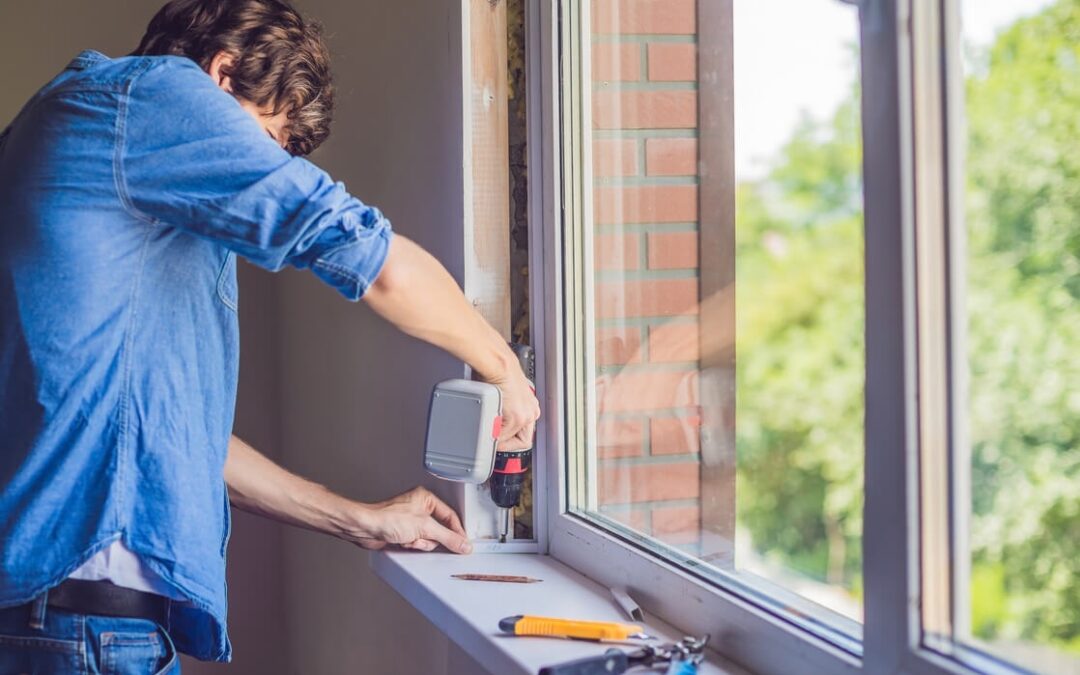Selecting the right window frames is a critical aspect of any window installation project. The choice of material and style can significantly impact your home’s energy efficiency, maintenance requirements, and overall aesthetic appeal. In this blog post, we will explore various window frame materials and styles, along with their advantages and disadvantages, to help you make an informed decision for your window installation project.
Popular Window Frame Materials
There are several window frame materials to choose from, each offering unique benefits and drawbacks. Some popular options include:
Wood
Wood is a classic choice for window frames, offering natural beauty and excellent insulation properties. It can be painted or stained to match your home’s exterior and is suitable for a wide range of architectural styles.
Pros:
- Excellent insulator
- Aesthetically pleasing
- Can be painted or stained to match your home’s exterior
Cons:
- Requires regular maintenance (painting, staining, or sealing) to prevent rot and decay
- Susceptible to moisture damage, warping, and insects
- Typically more expensive than other materials
Vinyl
Vinyl window frames are a popular choice for their affordability, low maintenance requirements, and energy efficiency. They are available in various colors and finishes, making them a versatile option for many homes.
Pros:
- Energy-efficient
- Low maintenance (no painting or staining required)
- Resistant to moisture, insects, and warping
Cons:
- Limited color and finish options
- May not be suitable for high-end or historic homes due to their appearance
- Can become brittle over time in extreme temperatures
Aluminum
Aluminum window frames are known for their strength, durability, and modern appearance. They are lightweight and require minimal maintenance, making them a popular choice for commercial buildings and contemporary homes.
Pros:
- Strong and durable
- Low maintenance (no painting or staining required)
- Sleek, modern appearance
Cons:
- Poor insulator (may require thermal breaks to improve energy efficiency)
- May be prone to condensation issues
- Not as aesthetically versatile as wood or vinyl
Fiberglass
Fiberglass window frames are a relatively new option that offers excellent insulation properties, durability, and low maintenance requirements. They can be painted to match your home’s exterior and are resistant to moisture, insects, and warping.
Pros:
- Energy-efficient
- Low maintenance (no painting or staining required)
- Resistant to moisture, insects, and warping
Cons:
- More expensive than vinyl or aluminum
- Limited availability compared to other materials
- May not be suitable for all architectural styles
Choosing the Right Window Frame Style
In addition to selecting the appropriate material, it’s essential to choose a window frame style that complements your home’s architecture and meets your functional needs. Some popular window frame styles include:
Double-Hung
Double-hung window frames feature two sashes that slide vertically, allowing for easy cleaning and improved ventilation. This classic style is suitable for various architectural styles, including colonial, Victorian, and Craftsman homes.
Casement
Casement window frames are hinged on one side and open outward using a crank or lever. They offer excellent ventilation and unobstructed views, making them an ideal choice for contemporary homes or rooms with scenic views.
Awning
Awning window frames are hinged at the top and open outward, providing ventilation even during light rain. They work well in modern homes and can be combined with other window styles, such as casement or picture windows, for added functionality.
Sliding
Sliding window frames consist of one or more sashes that slide horizontally along a track. They are easy to operate and offer a sleek, modern appearance suitable for contemporary homes.
Choosing the right window frames for your installation project involves considering both the material and style that best suit your home’s architecture and functional requirements. By evaluating the pros and cons of various materials, such as wood, vinyl, aluminum, and fiberglass, and selecting a frame style that complements your home’s design, you can ensure a successful window installation that enhances your home’s energy efficiency, aesthetic appeal, and overall value. Consult with a professional window installer or contractor to help guide you through the selection process and ensure a high-quality installation that meets your needs and preferences.

